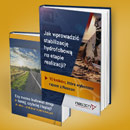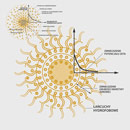Gambling involves a complex interplay of chance and strategy, where knowing the odds can significantly affect your experience. The terms 'payouts' and 'RTP' (return to player) are key components that players must comprehend to make informed decisions when placing bets. Understanding these concepts can help you formulate better betting strategies that enhance your chances of success.
At its core, the concept of odds represents the likelihood of a particular outcome occurring. A crucial aspect of gambling is the relationship between odds and payouts; higher odds can lead to substantial payouts, but they also indicate lower probabilities of success. Conversely, lower odds typically suggest more favorable chances of winning, albeit with smaller returns. Grasping these fundamentals not only aids in evaluating different betting options but also contributes to developing a sound approach to wagering.
RTP serves as a guideline for players, indicating how much money is expected to be returned over time based on wagers made. By analyzing RTP percentages alongside odds and potential payouts, players can optimize their betting strategies, making choices that align with their risk tolerance and financial goals. Thus, understanding these elements is paramount for anyone looking to enhance their gambling experience.
Calculating Different Types of Odds in Betting
Understanding the different types of odds is crucial for anyone involved in betting. Odds can be presented in several formats, mainly decimal, fractional, and moneyline. Each format has its own way of representing the likelihood of an outcome and the potential payout.
Decimal odds are straightforward. They indicate the total return you will receive for every unit staked, including the original stake. For example, decimal odds of 2.50 mean that for every $1 wagered, the total return would be $2.50, which includes the profit of $1.50.
Fractional odds are commonly used in the UK. These odds represent the profit relative to the stake. For instance, odds of 5/2 mean that for every $2 wagered, a profit of $5 is made if the bet wins. Understanding these fractions can help better comprehend potential returns.
Moneyline odds are primarily used in the United States and can be expressed as either positive or negative values. Positive odds indicate how much profit one would make on a $100 bet, while negative odds show how much needs to be wagered to make a $100 profit. For example, +150 means a profit of $150 on a $100 bet, while -150 means one must bet $150 to win $100.
To calculate potential payouts, knowledge of the odds format is vital. For decimal odds, the formula is simple: stake multiplied by odds equals total return. For fractional odds, the profit is calculated by multiplying the stake by the numerator and then dividing by the denominator. In the case of moneyline odds, the calculation differs based on whether the odds are positive or negative. Understanding these methods provides clarity on what to anticipate when placing bets.
In addition to odds, the Return to Player (RTP) percentage can also affect overall expectations. RTP represents the average amount a player can expect to win back over time, and it is an essential metric for evaluating potential outcomes in games of chance. Knowing the RTP can help set realistic goals when participating in various betting activities.
Interpreting Payout Structures for Various Games
Understanding the payout structures across different gambling games is fundamental for players aiming to optimize their betting strategies. Each game has its own way of determining how winnings are calculated based on the odds offered. Here are key points to consider:
- Slot Machines: These typically offer a payout percentage known as Return to Player (RTP). A higher RTP indicates a better long-term payout for players.
- Table Games: In games like blackjack and roulette, payouts can vary significantly based on the type of bet placed. For example, a single number bet in roulette has higher odds but lower probability of winning compared to outside bets.
- Sports Betting: Here, odds can take various forms such as fractional, decimal, or moneyline. The payout depends on both the odds and the stake, making it critical to understand how these elements work together.
- Poker: Payouts in poker depend on the pot size and players' bets. Understanding the odds of completing a hand can enhance a player's strategy and potential payouts.
It’s vital for gamblers to assess the payout structures in relation to their betting strategies. This assessment aids in determining which games may be more rewarding based on individual risk tolerance and playing style. Comprehensive knowledge of odds and payouts will lead to more informed decisions and better gameplay experiences.
For additional insights into gambling strategies and payouts, visit https://agenda21news.com/.
Adjusting Betting Strategies Based on Odds and Payouts
Adapting betting strategies requires a keen understanding of the relationship between odds, payouts, and the return to player (RTP) percentages. Knowing how these elements interact can lead to more informed decision-making and potentially higher returns.
First, evaluate the odds associated with each bet. Higher odds typically indicate lower chances of winning. Adjust your stakes accordingly, as a larger bet on a high-odds situation could lead to significant payouts, but it also entails greater risk. Conversely, lower-odds bets might offer safer options, albeit with smaller payouts.
Next, consider the payout structures of the games being played. Different games have varying payouts based on the combined odds and the probability of winning. For instance, slot machines might offer enticing jackpots, but the RTP can vary widely. By analyzing the payout percentages across different games, you can allocate resources to those that promise better returns based on the RTP metrics.
Another aspect is to track your betting history. Identify patterns in outcomes relative to the odds and adjust your approach. If certain strategies yield better results against specific odds, refine your tactics accordingly. This responsiveness to past performance can enhance your betting efficiency.
Finally, regularly reassess your betting strategy as the odds shift. Market forces and player trends can alter the odds, affecting potential payouts. Staying informed about these changes allows for timely adjustments in your betting approach, helping to maximize your results in the long run.












